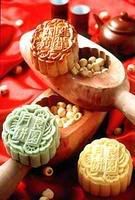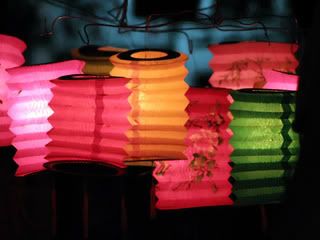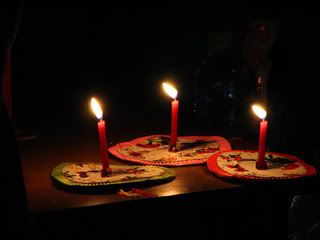

中秋食俗
中秋节这一天人们都要吃月饼以示“团圆”。月饼,又叫胡饼、宫饼、月团、丰收饼、团圆饼等,是古代中秋祭拜月神的供品。汉代张骞出使西域,引入胡桃、芝麻等,出现了以胡桃仁为馅的圆形“胡饼”,若此说确实,这可能是中秋节分食月饼的开始。但“月饼”一词,最早是见于南宋吴自牧的红菱饼。月饼是圆的,且被赋予团圆之意的时代是明市。肆至以果为馅,巧名异状,有一饼值数百钱者。”一双蟾兔满人间,悔煞嫦娥窃药年;奔入广寒归不得,空劳玉杵驻丹颜。” 清代,中秋吃月饼已成为一种普遍的风俗,且制作技巧越来越高。清人袁枚《随园食单》介绍道:“酥皮月饼,以松仁、核桃仁、瓜子仁和冰糖、猪油作馅,食之不觉甜而香松柔腻,迥异寻常。”北京的月饼则以前门致美斋所制为第一。遍观全国,已形成京、津、苏、广、潮五种风味系列,且围绕中秋拜月、赏月还产生了许多地方民俗,如江南的“卜状元”:把月饼切成大中小三块,叠在一起,最大的放在下面,为“状元”;中等的放在中间,为“榜眼”;最小的在上面,为“探花”。而后全家人掷骰子,谁的数码最多,即为状元,吃大块;依次为榜眼、探花,游戏取乐。
Mid-Autumn Food Culture
Mid-Autumn Festival, this day is the day when people want to eat the moon cake to show “reunion”. Moon cake, also calls Hu Bing, the palace cake, the month group, the abundant harvest cake, the group pie and so on, was the ancient times Mid-Autumn Festival worships the Queen of night for offering. Han Dynasty Zhang Qian goes abroad on a diplomatic mission at the western region, the introduction of walnut, sesame seeds and so on, appeared to take the Hu peach kernel as the stuffing circular “Hu cake”. If this said truly, this possibly is Mid-Autumn Festival that divides the moon cake. But “moon cake” a word, is most early seen in the Southern Song Dynasty Wu Zimu, red water chestnut cake. The moon cake is the circle, that entrusts with meanings of the reunion time is bright, Liu Dong "Imperial capital Scenery Slightly" said: “on August 15 offers a sacrifice to the month, its sacrifice fruits and cakes must the circle.” The field you became "Xihu Tour Will -odd" said: “in August 15 say Mid-Autumn Festival, the folk loses the moon cake, takes righteousness of the reunion.” A pair of toad in the moon full world, regret ghost Chang E steals the medicine year; Rushes to into Guang Hangui not to, spatial Lao Yu pestle in the Dan face.” The Qing Dynasty, Mid-Autumn Festival eats the moon cake to become one kind of universal custom, and the manufacture skill is getting higher and higher. Clear person Yuan Mei "along with Garden Menu" introduces: “the crisp skin moon cake, by the pine, the walnut kernel, the melon seeds and nuts and the crystal sugar, the pig painter's shop stuffing, the food is unconsciously sweet and the fragrant pine is soft and smooth, different common.”Beijing's moon cake makes take front door Zhimeizhai as first. Spreads the view nation, has formed Beijing, Tianjin, Soviet, broadly, the tide five kind of flavor series, and paid respects to the moon regarding Mid-Autumn Festival, enjoys looking at the moon has also had many place folk customs, like south of Yangzi River “divination foremost person in the field”: Slivers major and medium small three moon cake, folds in the same place, under biggest place, is “the foremost person in the field”; Among medium place, is “the person who placed second in the imperial civil service examination”.

中秋习俗
中秋祭月,在我国是一种十分古老的习俗。据史书记载,早在周朝,古代帝王就有春分祭日、夏至祭地、秋分祭月、冬至祭天的习俗。其祭祀的场所称为日坛、地坛、月坛、天坛。分设在东南西北四个方向。北京的月坛就是明清皇帝祭月的地方。《礼记》载:“天子春朝日,秋夕月。朝日之朝,夕月之夕。”这里的夕月之夕,指的正是夜晚祭祀月亮。这种风俗不仅为宫廷及上层贵族所奉行,随着社会的发展,也逐渐影响到民间。
Mid-Autumn Culture
Mid-Autumn Festival offers a sacrifice to the month, in our country is one kind of very ancient custom. According to the history book record, as early as in Chou Dynasty, ancient times the king had vernal equinox the gala, the summer solstice to offer a sacrifice to, the Autumnal equinox to offer a sacrifice to the custom which the month, the winter solstice offered sacrifice to heaven. Its sacrificial offering's place is called the altar to the sun, the earth temple, the month world, the Temple of Heaven. Splitting in four cardinal points four directions. Beijing's month world is Ming and Qing Dynasties emperor offers a sacrifice to the month the place. "Ritual Records" carries: “emperor spring sun, fall evening month. Dynasty of the sun, evening of the evening month.”Evening of here evening month, what refers to is precisely the night sacrificial offering moon. This kind of custom not only carries out for the palace and the upper formation aristocrat, along with society's development, also affects the folk gradually.

中秋简介
中秋节是我国的传统佳节,与春节、端午节、冬至并称为中国汉族的四大传统节日。据史籍记载,古代帝王有春天祭日、秋天祭月的礼制,“中秋”一词最早出现在《周礼》一书;直至唐朝初年,中秋节才成为固定的节日,《唐书·太宗记》记载有“八月十五中秋节”;中秋节的盛行则始于宋朝。节期为农历八月十五,是日恰逢三秋之半,故名“中秋节”,也叫“仲秋节”;又因这个节日在秋季、八月,故又称“秋节”、“八月节”“八月会”;又有祈求团圆的信仰和相关节俗活动,故亦称“团圆节”、“女儿节”。因中秋节的主要活动都是围绕“月”进行的,所以又俗称“月节”“月夕”“追月节”“玩月节”“拜月节”;在唐朝,中秋节还被称为“端正月”。关于中秋节的起源,大致有三种:起源于古代对月的崇拜、月下歌舞觅偶的习俗、是古代秋报拜土地神的遗俗。
Brief profile of Mid-Autumn Festival
Mid-Autumn Festival is our country's traditional festival, with the Spring Festival, Dragon Boat Festival, the winter solstice and is called the Chinese Han Nationality's four big traditional festivals. According to historical records, ancient times the king had spring, the gala, the autumn to offer a sacrifice to the month the rituals of state, the words “Mid-Autumn Festival” appears the earliest in the book of "Zhou rite".
Until the Tang Dynasty's first year, Mid-Autumn Festival has only then become a fixed holiday. The ancestor records of "Tangshu•Too" has “August 15, Mid-Autumn Festival” in it.
Mid-Autumn Festival was in vogue, before it then began in the Song Dynasty. The festival time for lunar calendar in August 15, is the date halfth on third autumn, therefore “Mid-Autumn Festival”, and is also called “the second month of Autumn festival”.
It is because of this holiday in autumn, in August, therefore it is called “the Mid-Autumn Festival”, or "the meeting in August". Also has the hope to reunite one's belief and the joint custom activity, therefore also called “the Mid-Autumn Festival”, or “the daughter festival”.
Because Mid-Autumn Festival's major activity revolves “the month” to carry on, therefore is named “the month festival”, “the end of the month”, “to pursue the month festival”, “to enjoy the moon the festival”, or “to pay respects to the moon the festival”. There are many ways in which we can call it.
In the Tang Dynasty, Mid-Autumn Festival is also called “the endof the first lunar month”. About Mid-Autumn Festival's origin, it has three kinds approximately: Stems from under which we worship, and the month where in ancient times people returned to their parents' home to seek the custom of dance occasionally, to worship the ancient land of the God that left these customs to us.

